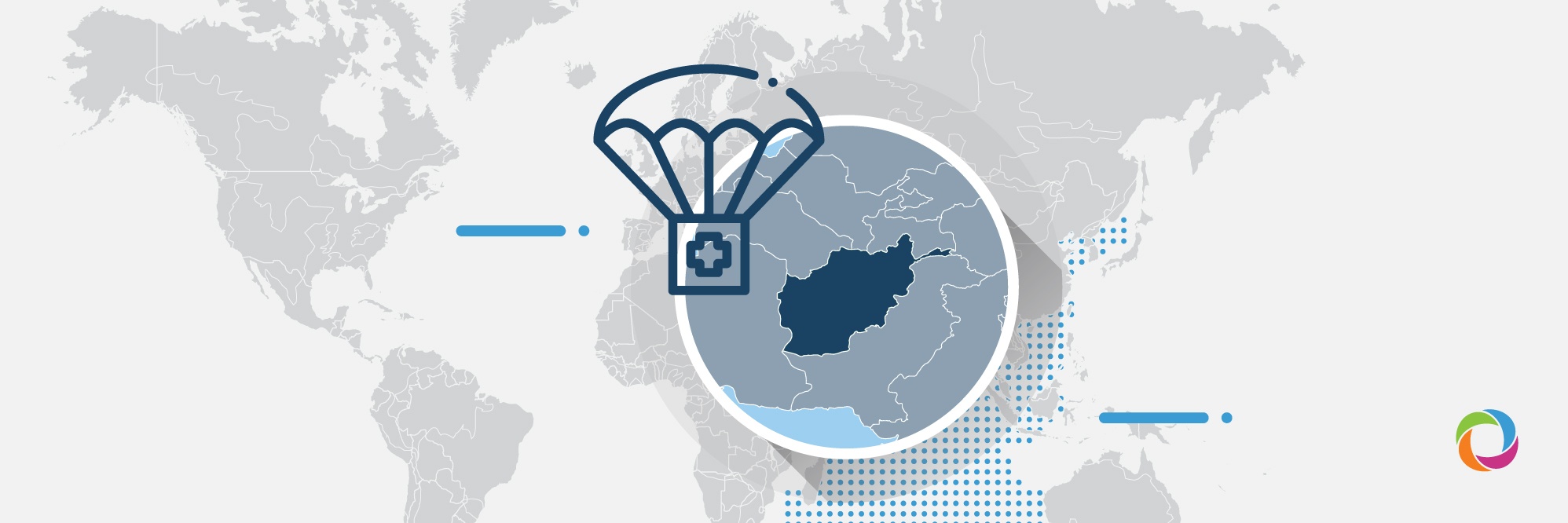Afghanistan is a mountainous landlocked country in Central Asia that has been the largest recipient of international aid during the last decade. With a population of over 31 million people and a gross national income per capita of only US$513, Afghanistan is one of the poorest and least developed countries in the world. The ongoing violent conflicts that have torn the country apart since the late 1970s, social turbulence, and political corruption represent the major obstacles to healthy socio-economic development.
Over the last decade, international donors have contributed as much as US$49 billion in the form of aid for the country’s development with the United States of America, Germany, and the United Kingdom being the largest contributors of Official Development Assistance (ODA) to this Central Asian country. This article analyzes the trends of ODA flows to Afghanistan that have been allocated during the last decade, highlights the largest ODA donors for 2019, and reveals the sectors that have benefited from the most funding.
How much aid goes to Afghanistan?
ODA is defined as flows of development assistance provided by developed states or by their executive agencies (e.g., USAID) to developing countries to promote economic development and welfare. ODA includes grants, loans, and other forms of assistance. According to the Organization for Economic Cooperation and Development (OECD), between 2010 and 2019, Afghanistan received around US$49.8 billion in total ODA flows which makes it the largest recipient of aid in the world. For the first three years of the timeframe analyzed, the ODA was at its highest fluctuating between US$6.24 billion in 2010 and US$6.67 billion in 2012. However, since 2013 the ODA flows have been subject to a negative trend falling as low as US$3.79 billion in 2018 before increasing moderately to US$4.14 billion in 2019.
See also: The TOP-10 ODA recipients in 2019
Fig.1. Total bilateral ODA disbursements to Afghanistan (2010 – 2019), US$ millions
Source: OECD.stat: Aid (ODA) disbursements to countries and regions – all official donors, ODA net, current prices.
The ODA disbursements channeled to Afghanistan between 2010 and 2019 were predominantly in the form of grants with values ranging from a minimum of US$3.6 billion in 2018 to a maximum of US$6.7 billion in 2011. It is important to note that in 2019, Afghanistan received 35.6% less in terms of grant funds compared to 2010. Meanwhile, the amounts of ODA loans had significantly lower values ranging from US$0.028 billion in 2011 to US$0.189 billion in 2018. Furthermore, for some years (2010, 2014, 2015, and 2016) data shows negative values of net aid implying that Afghanistan paid back more funds than it received.
Fig.2. ODA disbursements by funding types (2010 – 2019), US$ Millions
Source: OECD.stat: Aid (ODA) disbursements to countries and regions – ODA Loans net, Grants total, current prices.
Between 2010 and 2019, the United States was the largest provider of aid to Afghanistan with an overall ODA amount of US$18.9 billion (these figures do not include military aid which is not calculated according to OECD methodology and is not considered as ‘development assistance’). The US is followed by Germany with US$4.7 billion, Japan US$4.6 billion, and the United Kingdom with US$3.5 billion. By 2019, the US, Japan, and Germany had dramatically decreased their assistance to Afghanistan by 51.4%, 82.4%, and 12.9% respectively compared to 2010. The United Kingdom, on the other hand, increased its ODA flows by 36.9%.
Fig.3. Total bilateral ODA disbursements to Afghanistan by donor (2010 – 2019), US$ millions
Source: OECD.stat: Aid (ODA) disbursements to countries and regions – selected official donors, ODA net, current prices.
Aid disbursements to Afghanistan in 2019
In 2019, Afghanistan received US$4.3 billion in terms of net ODA or 11.5 % more than in 2018 with the majority of aid (69.1%) arriving through bilateral channels of aid distribution. The US continued to be the largest donor with US$1.4 billion followed by Germany with US$0.41 billion, the UK with US$0.37 billion, Sweden with US$0.133 billion, and Japan with ODA contributions amounting to US$0.131 billion.
Fig.4. Top five donors of net ODA for Afghanistan (2019), US$ millions
Source: OECD.stat: Aid (ODA) disbursements to countries and regions – selected official donors, ODA net, current prices.
In terms of the sectoral distribution of ODA flows for 2018-2019, it can be observed that the majority of funds (50.1% or a little over US$2.15 billion) were directed towards financing projects for social infrastructure and services. Humanitarian aid was the sector receiving the second-highest amount of ODA flow amounting to 12%, followed by the education sector with 9% and the economic infrastructure sector with 8%.
Fig.5. Bilateral ODA for Afghanistan by Sector, 2018-19 average (%)
Source: OECD-aid at a glance: Afghanistan (2018-2019).
Stay tuned for more exclusive news and coverage of Afghanistan’s development landscape by subscribing to our newsletter. DevelopmentAid’s recent interviews with Ehsan Mohmand, CEO of Dynamic Vision from Afghanistan, and Dr. Umesh K. Bhattarai, a retired Brigadier General of the Nepal Army, take a different view of the development and security situation in the region.
DevelopmentAid is the leading provider of business intelligence and recruitment tools designed to assist those active in the development sector. Join today and gain access to exclusive information on the upcoming funding opportunities (tenders and grants) from the largest bilateral and multilateral donors.

